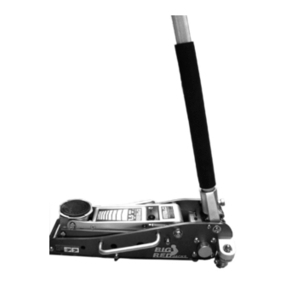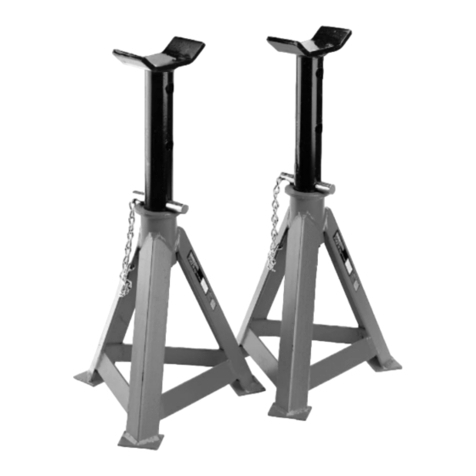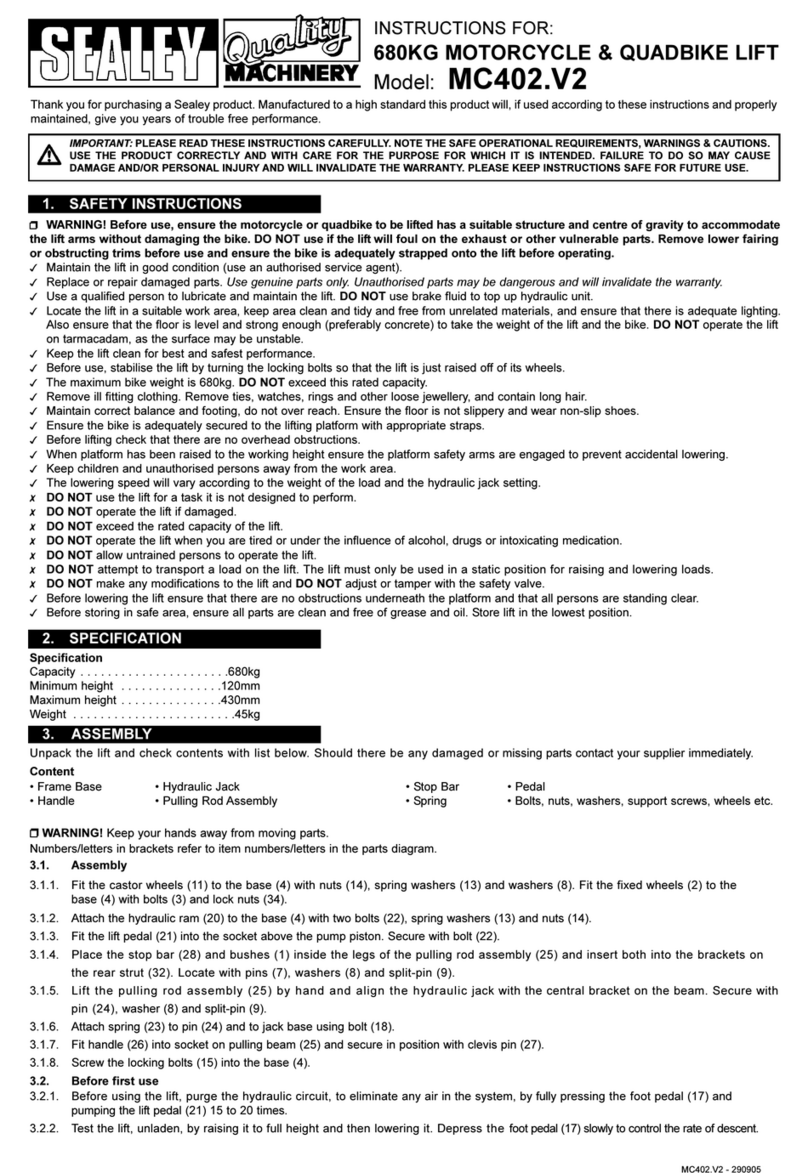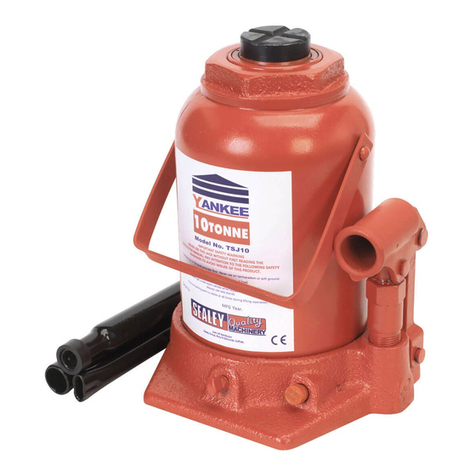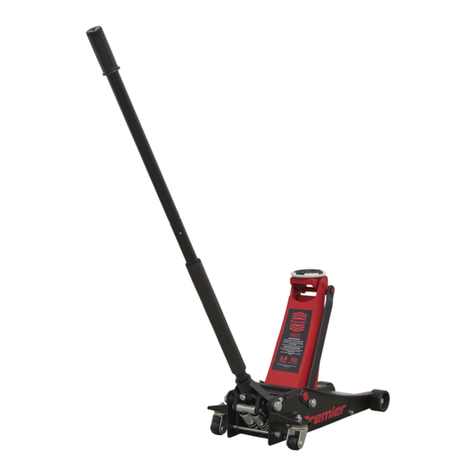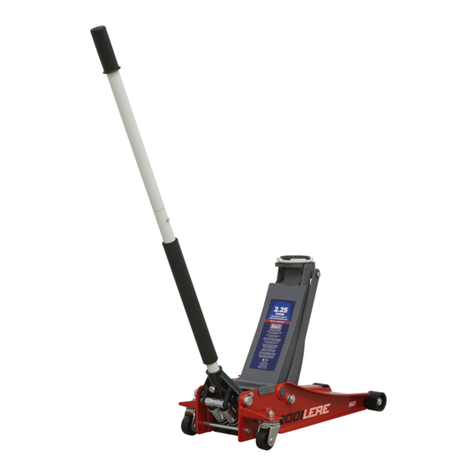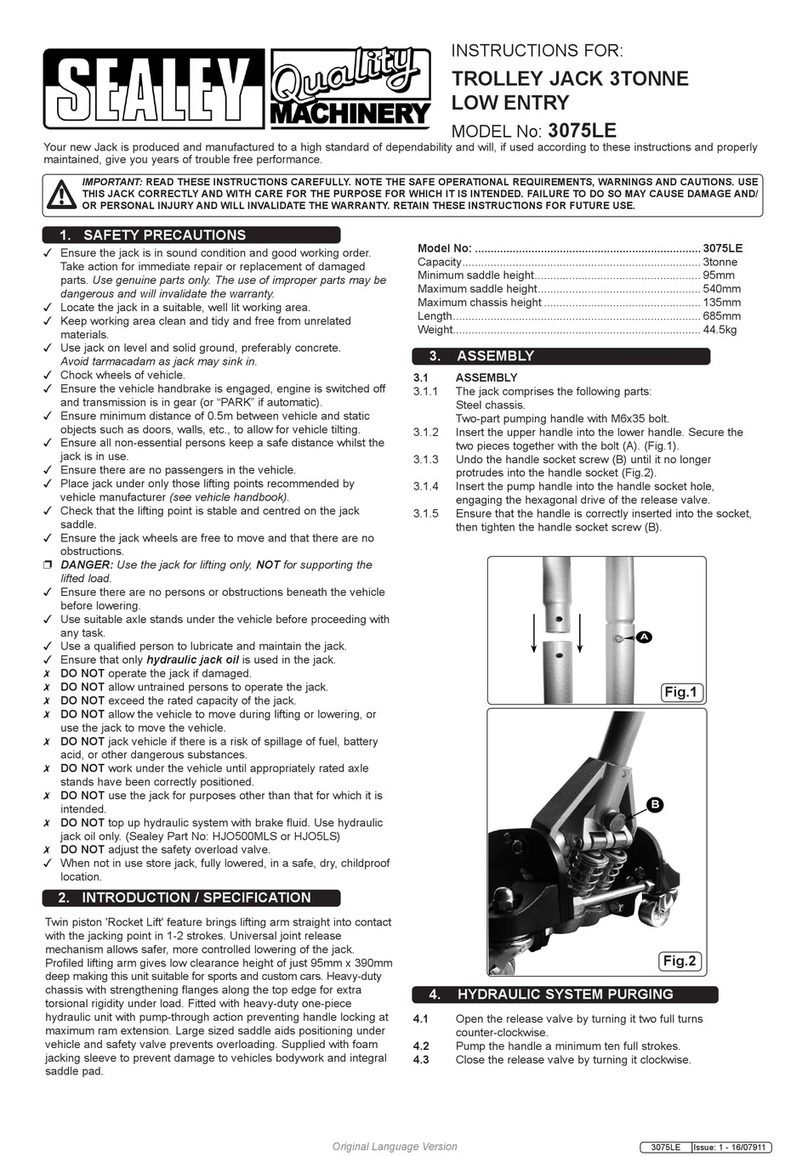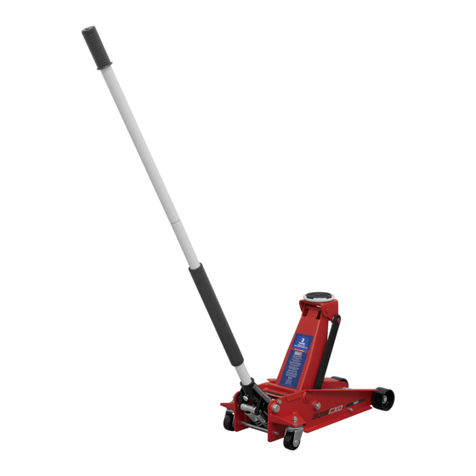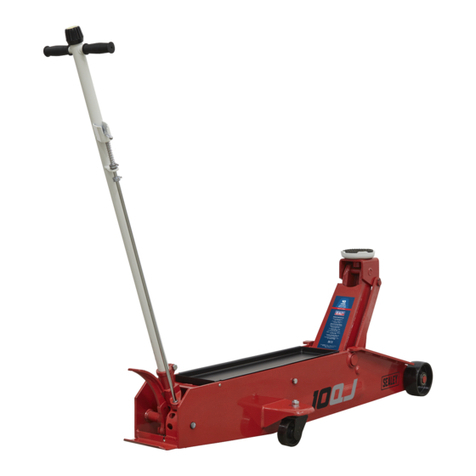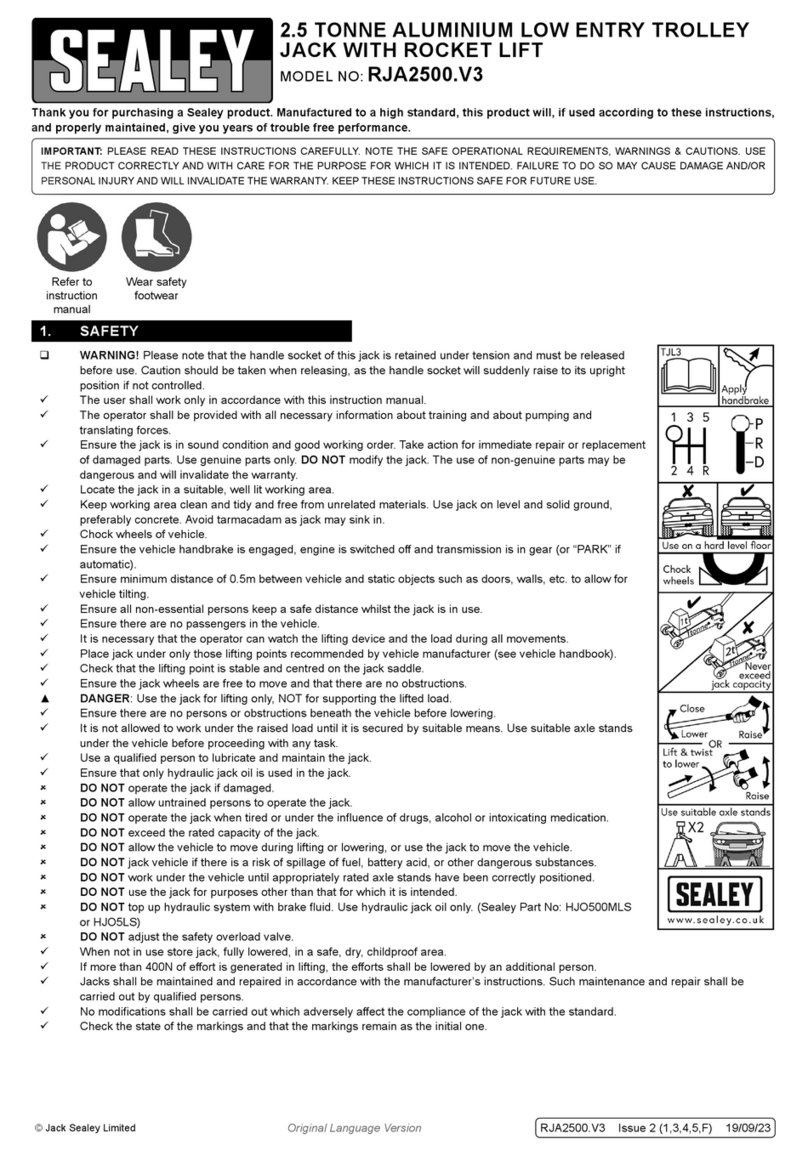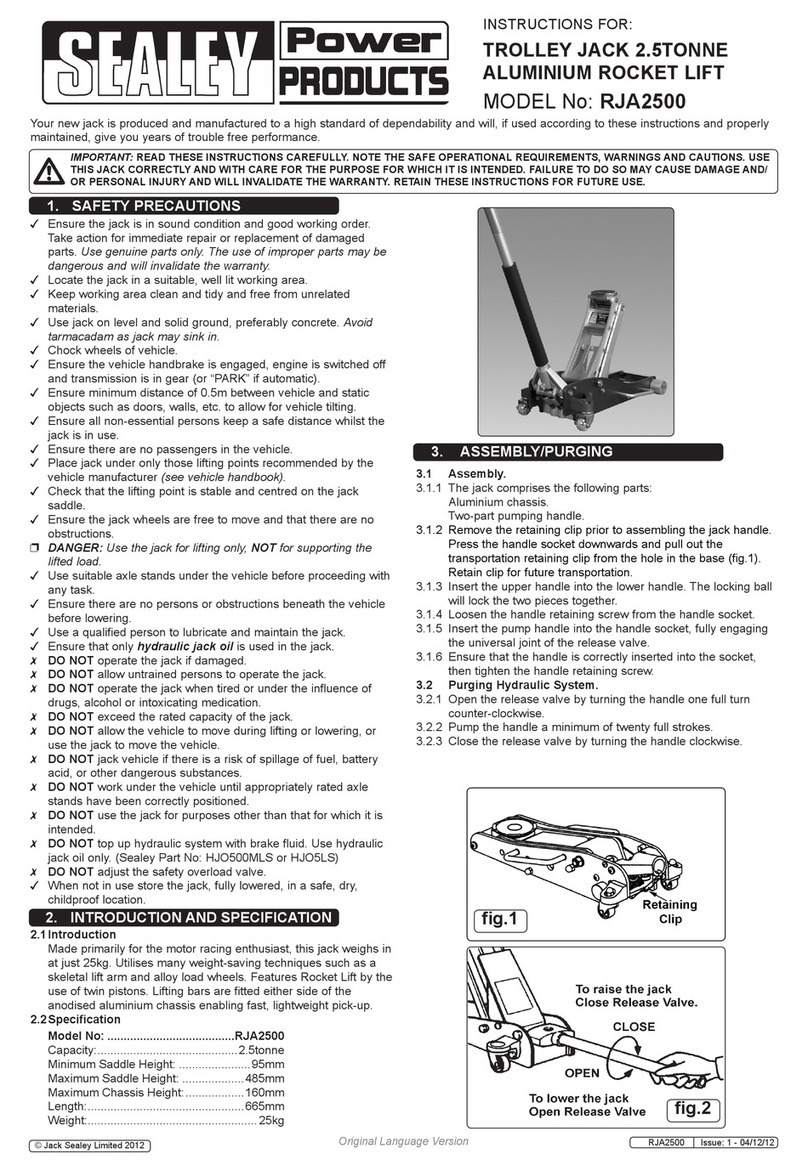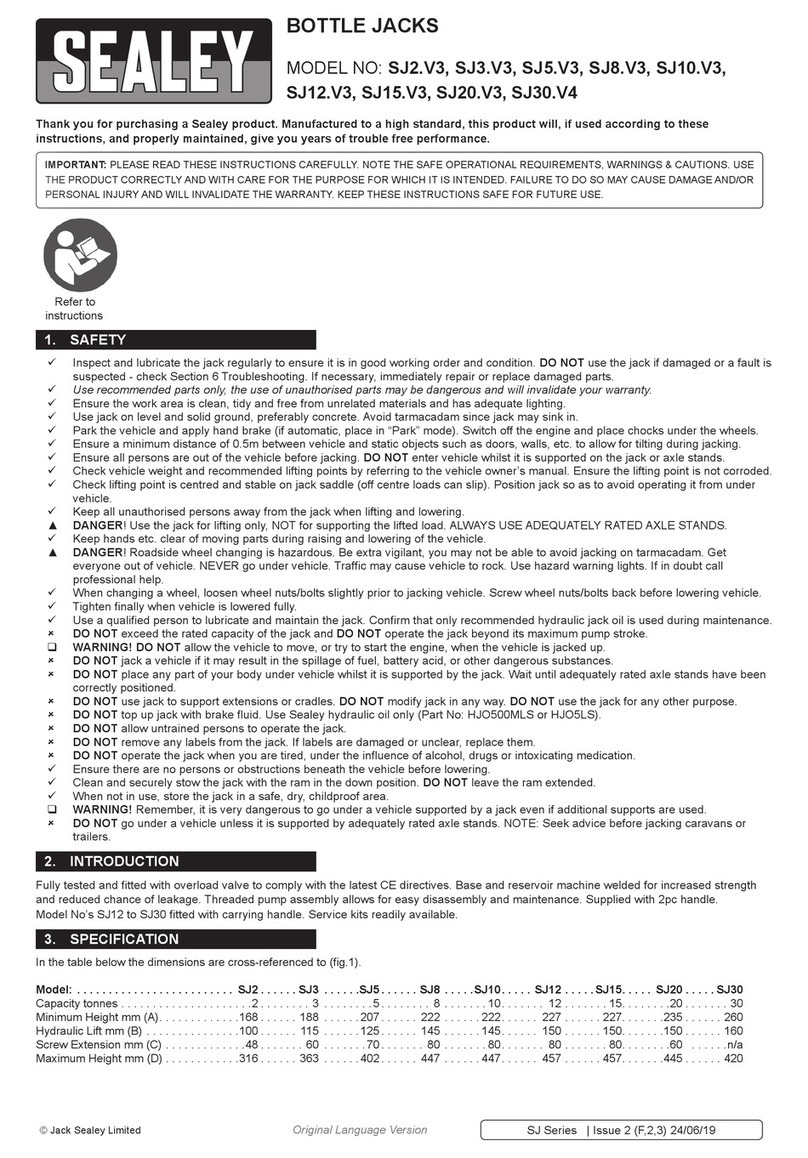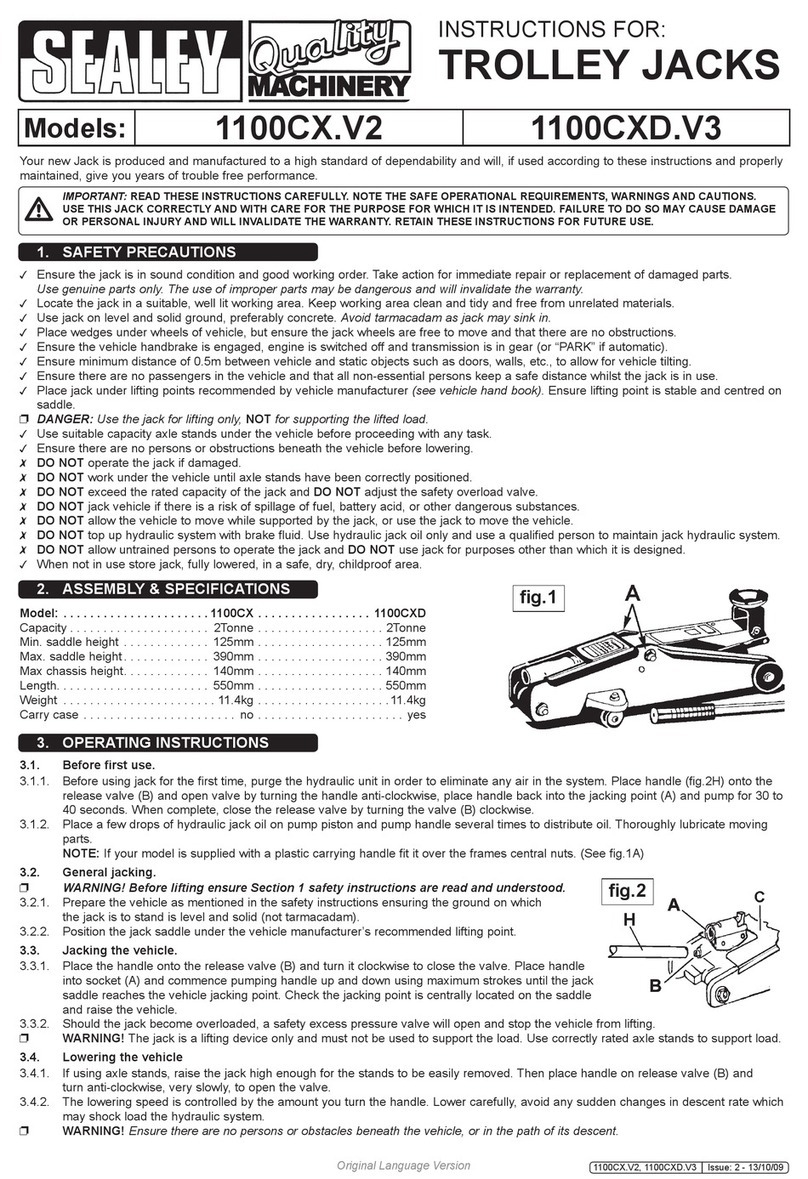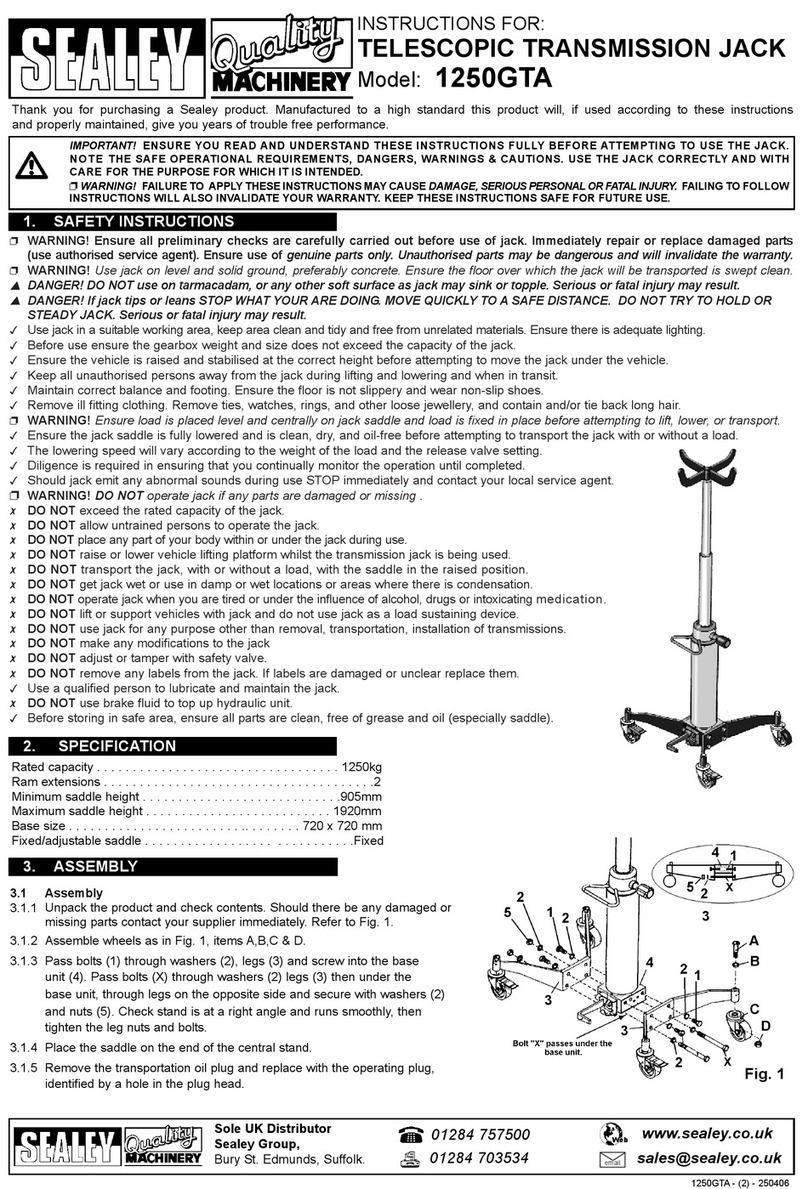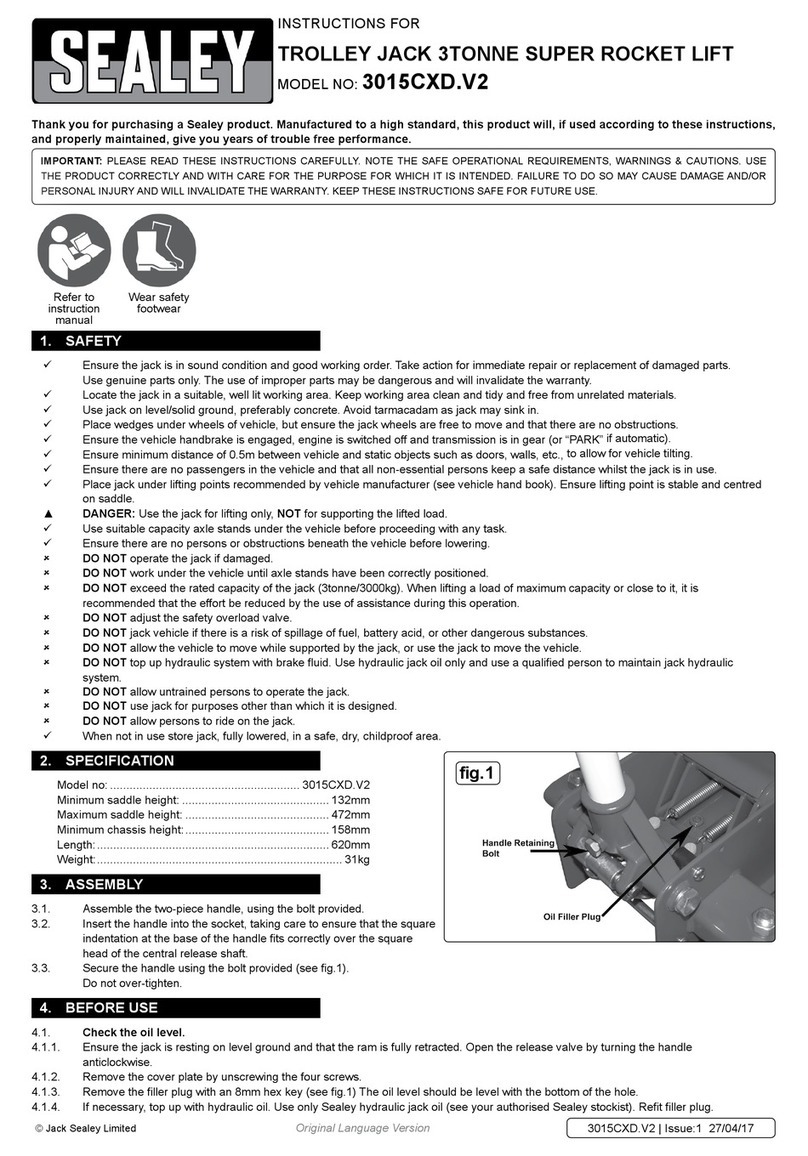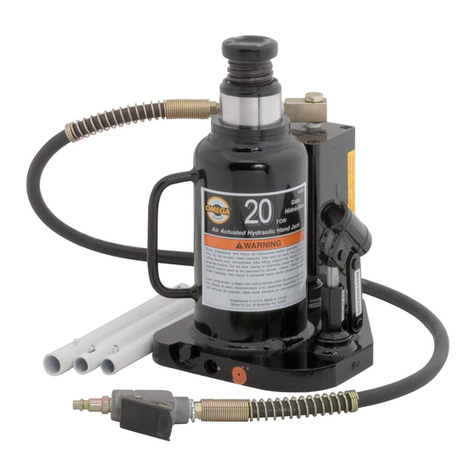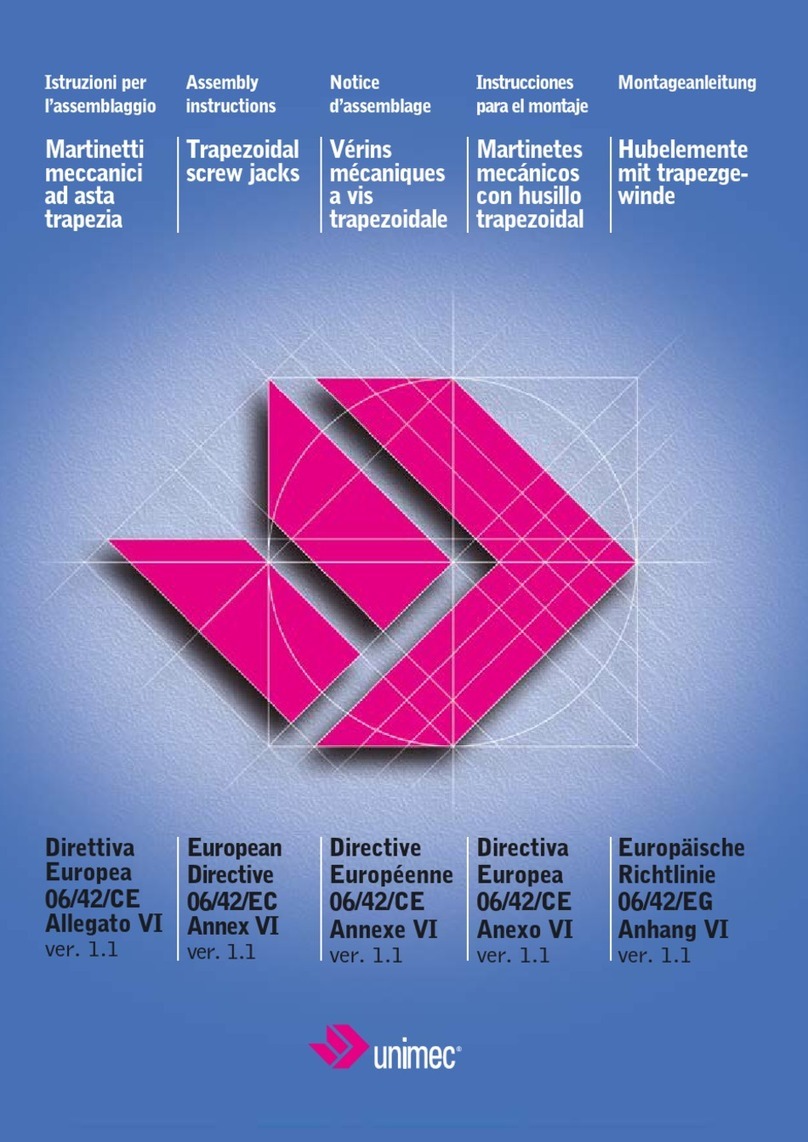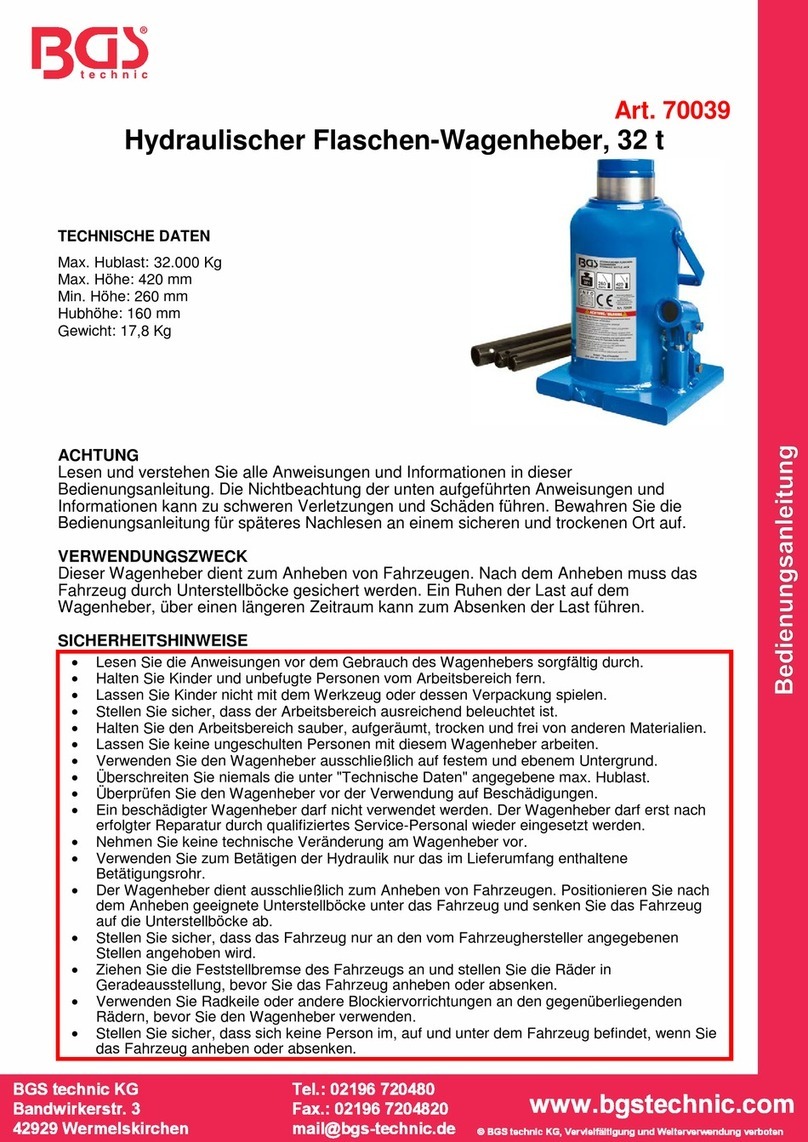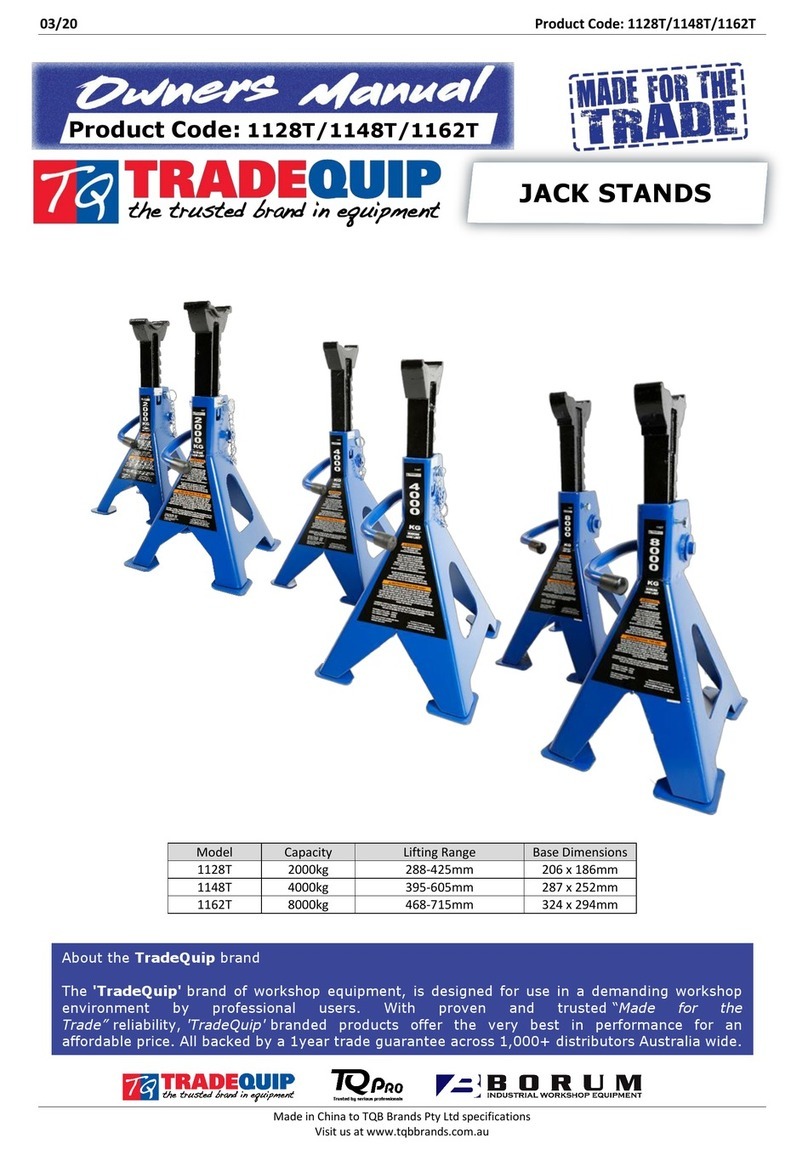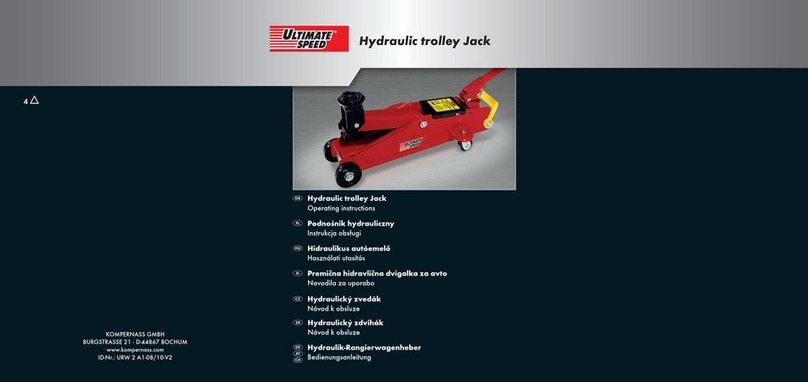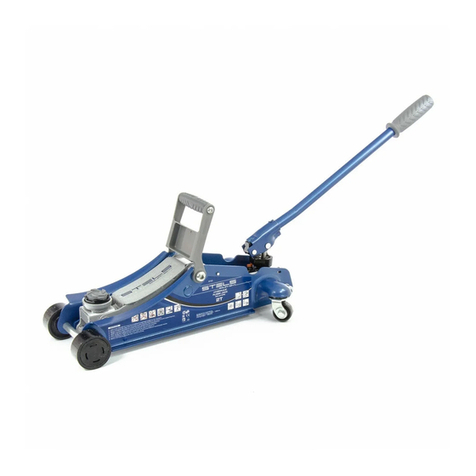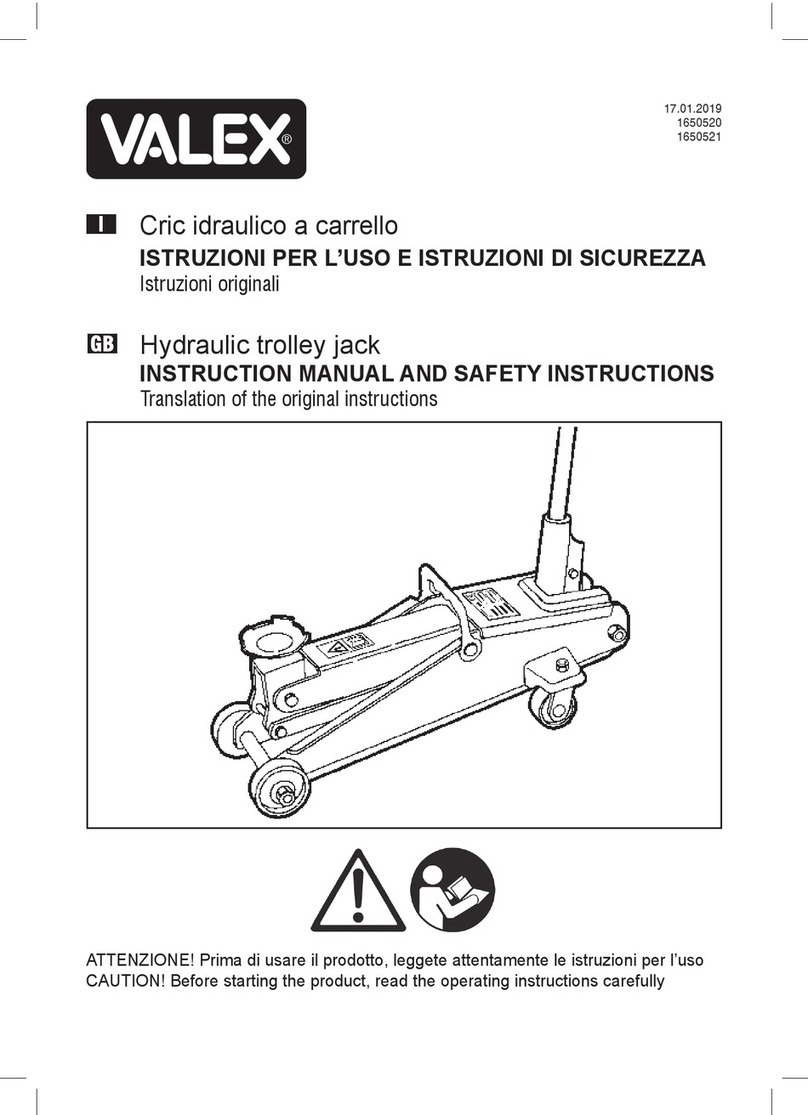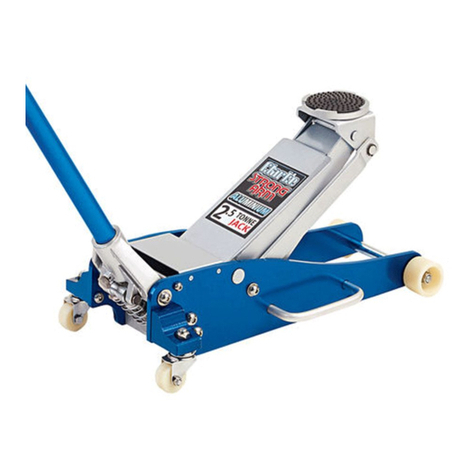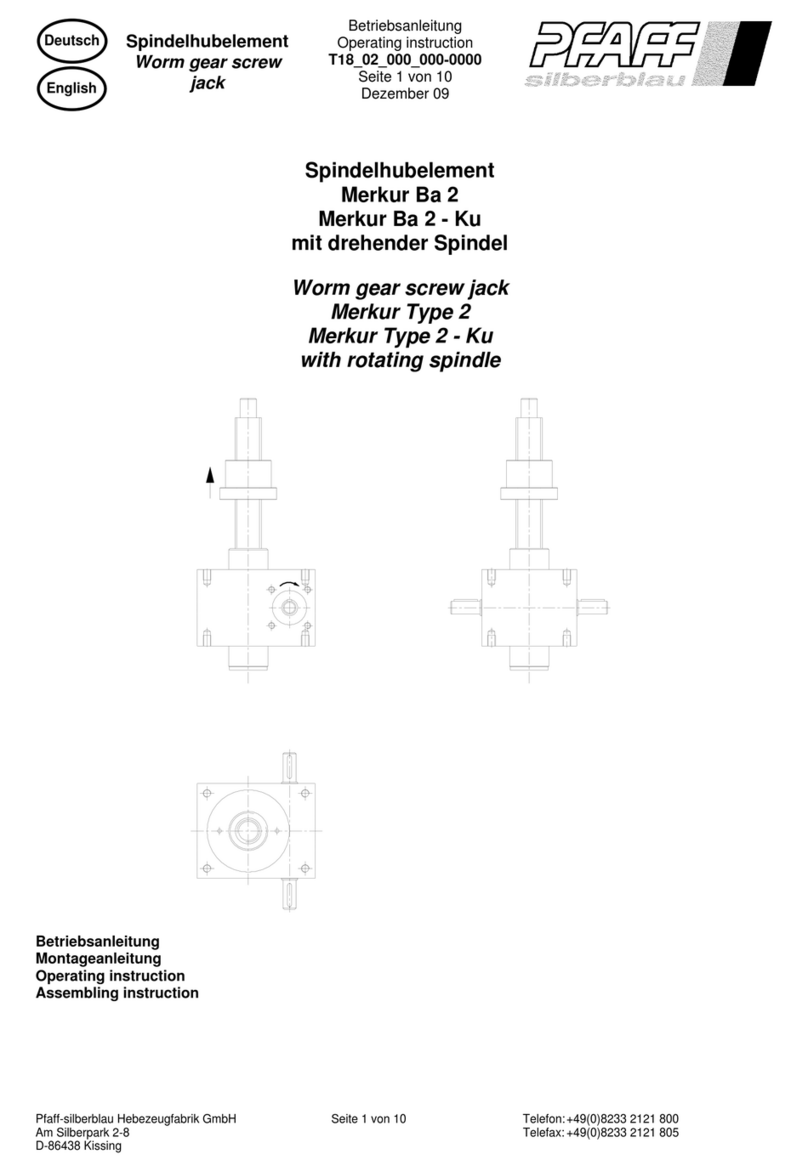
INSTRUCTIONS FOR:
Trolley Jack 5tonne Long Reach
MODEL No: 5001.V2
Thank you for purchasing a Sealey product. Manufactured to a high standard this product will, if used according to these instructions
and properly maintained, give you years of trouble free performance.
IMPORTANT: READ THESE INSTRUCTIONS CAREFULLY. NOTE THE SAFE OPERATIONAL REQUIREMENTS, WARNINGS AND CAUTIONS.
USE THIS JACK CORRECTLY AND WITH CARE FOR THE PURPOSE FOR WHICH IT IS INTENDED. FAILURE TO DO SO MAY CAUSE
DAMAGE AND/OR PERSONAL INJURY AND WILL INVALIDATE THE WARRANTY. RETAIN THESE INSTRUCTIONS FOR FUTURE USE.
1. SAFETY INSTRUCTIONS 3. ASSEMBLY & PURGING
2. SPECIFICATIONS
Model:..................................................................................... 5001.V2
Capacity: ...................................................................................5tonne
Min. Saddle Height: ..................................................................160mm
Max. Saddle Height: .................................................................560mm
Max. Chassis Height: ................................................................205mm
Length:.....................................................................................1420mm
Weight: ..........................................................................................90kg
4. OPERATING INSTRUCTIONS
4.1. Preparation
pWARNING! Before lifting, ensure that you have read,
understood and apply Section 1 safety instructions.
4.1.1. Prepare vehicle as described in safety instructions ensuring
the ground on which jack is to stand is level and solid (not
tarmacadam). We recommend concrete.
4.1.2. To manoeuvre the jack, ensure that the jack handle is locked
in either the upper, middle or lower locking position (fig.1). To
lock the jack handle, turn the locking lever clockwise until it
releases from the housing and locks the jack handle in the
desired locking position (fig.2).
4.1.3 With the jack handle locked, position the jack saddle under the
vehicle manufacturer's recommended lifting point (refer to
vehicle handbook).
4.1.4. Use the jack handle locked in either the middle or lower
locking positions when manoeuvring the jack saddle to jacking
points that are located further underneath larger vehicles.
4.2. Raising a vehicle
4.2.1. Ensure that the jack and the vehicle are on a hard level
surface.
4.2.2 Always ensure that the vehicle handbrake is engaged and the
vehicle wheels are chocked.
4.2.3. Consult the vehicle handbook to determine the position of the
jacking points.
4.2.4. Unlock the jack handle by lifting the locking lever and rotating
it counter-clockwise until it sits in the locking lever housing.
4.2.5. Turn the release valve control knob clockwise. DO NOT
over-tighten. The jack saddle may be raised quickly up to the
load using the foot pedal. DO NOT attempt to raise the load
with the foot pedal.
4.2.6. Commence pumping the jack handle through the full stroke
until the vehicle reaches the required height.
4.2.7. Place axle stands beneath the locations recommended by the
vehicle manufacturer.
4.2.8. Turn the release valve control knob counter-clockwise to lower
the vehicle onto the axle stands.
4.3. Lowering a vehicle
4.3.1. Rotate the release valve control knob clockwise.
4.3.2. Raise the vehicle off the axle stands.
4.3.3. Remove the axle stands from beneath the vehicle.
4.3.4. Slowly rotate the release valve control knob counter-clockwise.
pSAFETY WARNING! Always lower in a slow and controlled
manner and ensure that there are no persons or obstacles
beneath the vehicle, or in the path of descent.
4.3.5 Withdraw the jack from underneath the vehicle and lock the
handle in the upper locking position.
3Ensure the jack is in sound condition and good working order.
Take action for immediate repair or replacement of damaged parts.
Use genuine parts only. The use of unauthorised parts may be
dangerous and will invalidate the warranty.
3Locate the jack in a suitable, well lit work area.
3Keep work area clean and tidy and free from unrelated materials.
3Use jack on level and solid ground, preferably concrete. Avoid
tarmacadam as jack may sink in.
3Place chocks under wheels of vehicle (but ensure wheels of jack
can move freely).
3Ensure the vehicle handbrake is engaged, engine is switched off
and transmission is in gear (“PARK” if automatic).
3Ensure minimum distance of 0.5m between vehicle and static
objects such as doors, walls etc. to allow for vehicle tilting.
3Ensure there are no passengers in the vehicle.
3Ensure all non-essential persons keep a safe distance whilst the
jack is in use.
3Only place jack under those lifting points recommended by vehicle
manufacturer (refer to vehicle handbook).
3Check the lifting point is stable and centred on the jack saddle.
3Ensure the jack wheels are free to move and that there are no
obstructions.
pDANGER: Use the jack for lifting only, NOT for supporting the
lifted load.
3Use suitable capacity axle stands under the vehicle before
proceeding with any task.
3Ensure there are no persons or obstructions beneath the vehicle
before lowering.
3Use a qualified person to maintain or repair the jack hydraulic
system.
7DO NOT operate the jack if damaged.
7DO NOT operate the jack when tired or under the influence of
alcohol, drugs or intoxicating medication.
7DO NOT allow untrained persons to operate the jack.
7DO NOT exceed the rated capacity of the jack.
7DO NOT allow the vehicle to move while supported by the jack,
or use the jack to move the vehicle.
7DO NOT jack vehicle if there is a risk of spillage of fuel, battery
acid, or other dangerous substances.
7DO NOT work under the vehicle until axle stands have been
correctly positioned.
7DO NOT leave the jack handle locked in either the middle or lower
locking positions when the jack is left unattended.
7DO NOT use the jack for purposes other than that for which it is
designed.
7DO NOT top up hydraulic system with brake fluid. Use hydraulic
jack oil only. (Sealey Part No. HJO500MLS or HJO5LS)
7DO NOT adjust the safety overload valve.
3When not in use store jack, fully lowered, in a safe, dry, childproof
area.
Original Language Version 5001.V2 Issue: 1 - 04/07/12
3.1. Assembly
3.1.1. Fit the handle assembly into the handle socket so that the
locking position control rod passes through the bracket and
locates into the upper handle locking position (fig.1). Locate
the release valve square drive into the drive socket. Push the
handle fully down and secure with the handle retaining bolt
(fig.1). Test the operation and function of the release valve
control knob before use.
3.2. Purging
3.2.1. Before using the jack for the first time, purge the hydraulic
circuit in order to eliminate any air from the system. To do this,
open the release valve by rotating the release valve control
knob counter-clockwise (fig.2). Pump the foot pedal through its
full travel 20 times. Rotate the release valve control knob
clockwise.
© Jack Sealey Limited 2012
